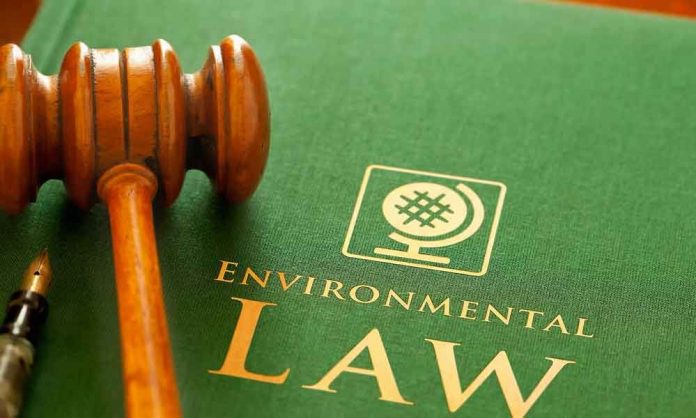This article is written by Shriyanshi Chitransh, a student of FIMT school of law, GGSIPU. This article includes a brief overview of the various schemes and policies for the conservation of nature and the need of conserving the environment.
Table of Contents
Introduction
In India, pollution and environmental degradation levels are alarmingly high due to poverty, deforestation, and industrial development without adequate standard principles for conservation and sheer greed. Fortunately, the public’s sense of humor has revived and nature conservation has attained a top priority. Governments have enacted Acts and regulations to diminish the rising danger of nature. Various schemes and policies for the conservation of nature have been proposed by the Government. To make the process rapid, great emphasis must be paid to environmental mental education, peoples’ participation, and population control.
The need for conserving the environment
Conservation of nature is an act of protecting the planet Earth for present and future generations. The most obvious reason for conserving the environment is to protect wildlife and promote diversity. Promoting wildlife and preserving the species must be the utmost concern as future generations may not be able to witness them which is disturbing as we have diversity in species and we should strive to maintain a healthy and functional ecosystem. Some species cannot survive without the intervention of humans in their natural habitats such as zoos and aquariums.
Therefore, the destruction of their natural habitat will result in the extinction of the species. Besides, species that migrate or adapt to other habitats are also vulnerable, and preserving these species should help to prevent the harm it can cause to their ecosystem. Increasing numbers of extinctions call for more importance and preservation.
For a human being to survive on the planet, there is an absolute need to preserve nature. With climate change already causing havoc in our environment, safeguarding nature should be our top-most priority. Nature is the ultimate solution to saving mankind on the planet and if we cannot even preserve our nature, our days are surely numbered. Nature is the only tool to fight against global warming and our conservation work probably comes in handy, we can utilize nature’s contribution to avoid the catastrophic increase in temperature. Everything is interconnected, one thing saves another thing. Climate change is a great risk to the planet and as soon as we realize this, we can all work together to fight against it.
Conservation of nature is important, as it has a great impact on human health, both in terms of preventing and the emergence of infectious disease. Having a wild habitat prevents the transmission of infectious diseases from animals to humans. One such example is the outbreak of Novel Coronavirus which was caused by consuming undercooked bat. The virus has infected over 1.9 crores (as of 8th August 2020) humans and the war is still going on.
A lot of medicines that we use as humans are derived from chemicals that are produced by animals and plants. Therefore, by conserving and protecting nature we can save ourselves as they also produce anti-cancer drugs and other medicines that are used on humans. So basically, to survive on the planet we need to protect nature. It is in our best interest to preserve nature because the exploitation of the natural habitat will amount to scarcity in the supply of food and water and things like pollution directly have adverse effects on humans.
Recent statistics and studies on nature and environment
The Ministry of Environment, Forest and Climate change handles activities under the Convention on Biological Diversity (CBD), Nagoya Protocol Sharing (ABS), National Biodiversity Action Plan (NBAP), National Report to the CBD and Nagoya Protocol, Intergovernmental Platform on Biodiversity Act, 2002 (BD Act), National Biodiversity Authority (NBA) and projects on biodiversity implemented through NBA.
Listed below are a few international meetings in which India actively participated between 2019 and 2020:
- Sub-regional Science-Policy Dialogue for South and West Asia organized by the secretariat of Intergovernmental Science-Policy Platform on Biodiversity and Ecosystem Services (IPBES) under the leadership of Capacity Building for the Asia Pacific held on 27-28 February 2019 in Nepal.
- Seventh Session of the Plenary of IPBES that was held in France from 28-04-2019 to 2-05-2019.
- An Open-Ending Working Group on the post-2020 Global Biodiversity Framework held in Kenya from 27-08-2019 and 28-08-2019..
- 23rd meeting of Subsidiary Body on Scientific, Technical and Technological Advice, 11th meeting of the Ad Hoc Open-ended Working Group on Article project on Biodiversity Finance Initiative (BIOFIN), in 2015 which layout a methodological framework for measuring expenditure on biodiversity, calculating the investment required for the implementation of NBAP and NBTs and for developing nationally appropriate Biodiversity Finance Plan. The initiative is hosted by the NBA.
- A project on capacity development of statutory institutions for effective implementation of the ABS Mechanism in India under the Indo-German Biodiversity Programme for 3 million Euro is being implemented through NBA in three states of Maharashtra, Tamil Nadu, and Uttarakhand through the State Biodiversity Boards.
Steps taken by the Indian government to preserve nature
World Nature Conservation Day is observed on July 28th every year across the world to create awareness of natural resources conservation and protect nature. With the rise in the level of deforestation and losing wildlife, conservation of nature has become a top priority. In India, due to the rise in urbanization, issues like loss of forest cover, pollution, and loss of wildlife has increased. The government has taken initiative to reverse the situation. Here are five Initiatives are taken by the Government of India:
- The vision of creating Nagar Van Udyan Scheme is to develop at least one City Forest in each city having Municipal Corporation or Class 1 Cities to accommodate a wholesome health environment and contribute to the growth of clean, green, and sustainable India. Its objective is to create 200 City forests in the country and to create awareness about the plants and biodiversity. Conservation education to the people, who are unaware of the damages that can happen due to their ignorance in the conservation of nature.
- Waste management under Swachh Bharat Abhiyan, a mass movement initiated by the Prime Minister of India, Mr. Narendra Modi, in the year 2014. The Abhiyan motives lie in the cleanliness of the environment. He hopes to create a sense of sense of responsibility among the citizens to help achieve Mahatma Gandhi’s aim for Clean India. The main objective of the Abhiyan is to recover resources for utilization through recycling and creating employment in the process.
- Project Tiger has been the most successful environmental project by the Government. Project Tiger was adopted in the year 1973 to improve the decreasing numbers of Tigers in India. It is a scheme sponsored by the Ministry of Environment, Forest and Climate Change and assists the tiger states for tiger conservation. The objectives of the projects are to protect and restore habitat, monitor them day-to-day, eco-development for local people, and relocation of the people from the habitats of tigers.
- The Government of India initiated the National Wetland Conservation Programme (NWCP) to conserve and make acute use of wetlands in the country, therefore, preventing its further degradation. The scheme was introduced with the objectives of undertaking extensive conservation measures in the wetlands that need immediate help.
- The Ministry of Environment, Forest and Climate change launched the Green Skill Development Programme in June 2017. Green skills include conserving and protecting the green of nature alongside creating awareness among the youth to develop skills and gain experience. In May 2018, during the launch of the GSDP mobile app, Harsh Vardhan, the Union Minister for Environment, forest, and climate change said that 2.25 lakh people will be employed through GSDP by the next year and about five lakh will be employed by 2021.
New schemes
The Ministry of Environment, Forest and Climate change implemented the National River Conservation Programme, sub-schemes of Conservation of Natural Resources and Ecosystems, Green India Mission, and National Afforestation Programme, National Coastal Management Programme, National Mission on Himalayan Studies under Climate Change Program under the Central Sector & Centrally Sponsored Schemes of Government of India.
These schemes act as corrective measures for the conservation of the environment and the viable development of various ecosystems. The Ministry also monitors the implementation of the United Nations Convention to Combat Desertification (UNCCD) and has been carrying out enabling activities and other obligations of the Convention.
The funding under the Central Sector Schemes is 100 percent from the Government of India. Under the Centrally Sponsored Schemes, as per the revised funding pattern from 2015-16 onwards, the Government of India’s share is 50 percent for the rest of India and 80 percent for the North Eastern States and 3 Himalayan States i.e Jammu & Kashmir, Himachal Pradesh and Uttarakhand in the environment sector. The share of the Government of India is 60 percent for the rest of India in the schemes related to forestry and wildlife and 90 percent in respect of the North Eastern States and 3 Himalayan States.
Acts passed by the Indian government
Indian Government has passed Acts to conserve nature which is explained below:
The Wildlife Act was one of the most prominent Acts enacted for protecting wild animals and birds. Control of wildlife was transferred from the State list to the Concurrent list in 1976, thus giving powers to the Central government to enact this legislation. The Wildlife (Protection) Act, 1972 also included the Constitution of the Indian Board of Wildlife (IBWL), which actively took up the charge of setting up wildlife natural parks and sanctuaries. The main objective of the enactment of the Act was to put restrictions on hunting or poaching wildlife animals and birds. The Act includes rehabilitation of endangered or threatened species.
Preservation of biological diversity by setting up sanctuaries and parks and granting permission to hunt the wildlife for specific purposes such as scientific research, scientific management, and collection of specimens for museums and zoological gardens, etc. Collaborating with NGOs to create awareness for the promotion of saving and preserving wildlife diversity. This Act is adopted by all the states except the state of J&K, they have their own sets of acts.
The Forest Conservation Act comprises all types of forest including reserve forests, protected forests, or any forests irrespective of their ownership. The Act extends to the whole of India except J&K. The Forest Conservation Act,1980 has ample provisions promoting the elimination of deforestation and stating to encourage afforestation on the non-forest areas. It has imposed restrictions on the de-reservation of the forest without any prior Central government approval and prohibits allotment of any forest land for non-forest purposes. Forest-dwelling tribal communities have rich knowledge and have good experience but their contribution mostly goes unnoticed and honored.
Amended Forest Act, 1992: The Act made some provisions for allowing non-forestry activities with the prior approval of the central government. Wildlife sanctuaries, natural parks are entirely prohibited from being used for any exploration or survey without prior approvals from the Central Government. Cultivation of tea, coffee, spices, rubber, palms, oil-bearing plants, and cash crops comes under non-forestry activities, therefore, are prohibited and are not allied in the forest lands.
The Water (Prevention and Control of Pollution) Act provides prevention and control of any water-related pollution. It focuses on the maintenance and restoration of water quality on the surface and ground. The Water (Prevention and Control of Pollution) Act, 1974 has set up two boards: Central and State. These boards are assigned with powers and functions to control pollution. The Act has been provided with funds, budgets, and account for these boards. The Act restricts the disposal of any poisonous, polluting matter in the flow of the water. The Act also includes punishment and fines for any violation of the provisions.
Functions of the Central Pollution Control Board (CPCB)
It provides assistance and guidance to the state board. CPCB advises the Central government in matters related to water purification and elimination of water pollution. CPCB lays down quality measures of water. It prepares manuals for the treatment and disposal of sewage and trade discharges. It compiles and collects data and provides a statistical analysis of water quality and pollution. It set up laboratories for the analysis of water quality, sewage, or trade discharges.
Functions of the State Pollution Control Board (SPCB)
The functions performed by the SPCB are executed at the state level and are under the instructions of the Central Board. SPCB advises the state government concerning the establishment of the industry which may harm the water stream or river. It lays down rules and regulations on the disposal of effluents in the flow of water. The State Board has the power to take the sample and test in the laboratory to check the quality of the water and if they are in any way harmful to the usage of water and they have the power to sanction or refuse the consent of the industry. Every industry has to gain consent from the board by applying all the details and prescribed ways the effluent is carried out. The Board focuses on the re-evaluation of the dumping outlets and re-structuring the way of disposal of sewage and trade discharges.
The Water (Prevention and Control) Cess Act, 1977 authorizes the Central Board to collect cess on the water that has been consumed by the person carrying out the industries and by the local authorities, who are responsible for the supply of water. The Water (Prevention and Control) Cess Act, 1977 was amended in 1991 with a view of expanding the resources of the board and removing the gaps in the Act, and providing concession to the industry for complying with the standard quality and consumption. However, there are many enforcement issues.
This Act was passed to meet the expenses of the boards yet the Water Board has no power to take direct actions against the defaulting party. The court proceedings are longer than expected and the delays cause the prevention in action, therefore, defeating the only purpose of the Act and because the problem lies in the implementation of the Act. Amendments are enacted to provide strengthening to the boards yet the pollution of the water is still on high rise and the people are ignorant of the increase in the level of pollution and the authorities lack the power to enforce it effectively and efficiently.
Air (Prevention and Control of the Pollution) Cess Act, 1981 was passed after the participation of India at the United Nations Conference in the Human Environment held in Stockholm, to take appropriate steps to preserve the environment which includes, among other things, the prevention and control of the air pollution. The Air (Prevention and Control of the Pollution) Cess Act, 1981 applies to the whole of the country. Air pollution can be defined as the presence of any solid, liquid, gaseous substance present in the atmosphere, in a concentration that may be injurious to any human or animal’s life and dangerous to nature.
Under Section 19, of the Act, the State Government, after the consultation with the State Board, can declare an area, an air pollution controlled area and no industrial plant shall be planted in that area without prior approval from the Government. The Central and State Water Board has been endowed with the task of controlling and preventing air pollution and accordingly, they have been redesigned into the Central Pollution Control Board and State Pollution Control Board. The State Board has powers to lay down rules and regulations for the prevention and control of air pollution.
Under Section 20, the government has the power, with the consultation of the boards, to instruct the Authority in charge of the registration under the Motor Vehicle Act, 1939, to secure the standard emissions for automobiles. The boards have powers to press charges against the polluter in the court and punish him for polluting the air and incurred expenses as compensation for the damages that the board has to recover. Noise pollution also comes under the category of air pollution since 1987.
Environment Protection Act, 1986 was enacted to protect and preserve the environment and the things connected thereto. The Act includes necessary decisions and steps to be taken to protect the environment and to prevent hazards to humans, plants, or any living creatures. The Environment Protection Act, 1986 comprises 26 sections which are explained in 4 chapters and applicable to the whole of India.
The Act ensures the enactment of the regulations and Acts concerning pollution control. It issues directions to shut down any industrial plant or process that can be harmful to the environment and the living beings around it. The Act imposes strict penalties on the defaulter of the regulations.
Conclusion
Exposure to nature is beneficial and is important for the survival of living beings. It’s high time to focus on protecting the natural resources and safeguarding the environment. The Government of India has done quite a remarkable job to combat the emerging deterioration in the conservation of nature but we still have to go a long way.
References
- https://www.nationalgeographic.org/encyclopedia/conservation/
- https://www.thehindu.com/news/national/vanishing-wildlife-22-species-have-gone-extinct-in-india/article28733215.ece
- https://www.pure-leisure.co.uk/3-reasons-why-conservation-is-so-important/#:~:text=The%20most%20obvious%20reason%20for,a%20healthy%20and%20functional%20ecosystem.
- https://www.nationalgeographic.org/article/conserving-earth/
- https://www.ncbi.nlm.nih.gov/pmc/articles/PMC3162362/
LawSikho has created a telegram group for exchanging legal knowledge, referrals and various opportunities. You can click on this link and join:















